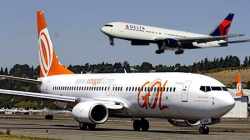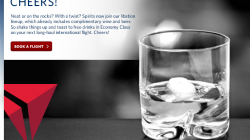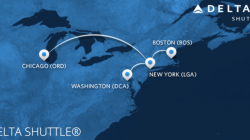In this post, I’m going to cover a few things – the main one being the ability to book open-jaws across regions with Delta SkyMiles, and filling in the open-jaw with another program’s miles. The specific example I use will involve a destination in Brazil (for reasons you will soon see). This is a bit of an “advanced” post, but it’s one that really intrigues me. I previously wrote about it on my old blog, but have updated it for new information and clarity. Please leave a comment if something is unclear.
Ever since Delta decided to show Korean Air award space online, I’ve been intrigued by Korean’s fifth freedom route between Los Angeles and Sao Paulo, Brazil (LAX-GRU). Sure, the space was always there, but now it’s easier to find. Keep in mind that you can also use SkyMiles on Brazilian airline Gol to travel within Brazil from Sao Paulo, but those seats are not bookable online.
Why is this such an interesting flight to me?
1) It’s the only direct flight between the west coast and Brazil on any airline.
2) It’s on Korean Air – not only is Korean Air a great airline, but any partner space is redeemable at the low level with SkyMiles. This is a frustration SkyMiles users have with Delta — flights on Delta can often be dramatically more expensive than on partners.
I started playing around with the Delta booking engine and found that LAX-GRU can be redeemed on certain occasions. The flight is only 3x weekly, departing LAX on Mondays/Wednesdays/Fridays and GRU on Tuesdays/Thursdays/Saturdays. If you keep it at the low-level, it’s only 100,000 miles + $93 taxes in business class.
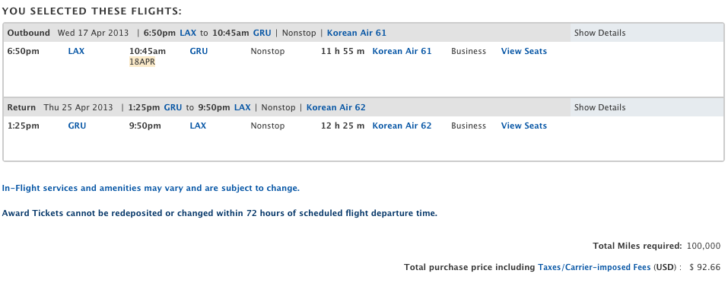
The Premise:
I want to book a one-way trip somewhere else in the world from Brazil, anywhere I can go where I will be exempt from otherwise nasty fuel surcharges. Once I’m at that other part of the world, I want to pick up the back-end of my Delta award (the front-end of which I used to get to Brazil).
One facet of SkyMiles that is often misunderstood is that “Delta only allows roundtrips.” Technically, no. Delta only allows you to book award tickets in groups of 2 one-ways. The award chart is structured to show the one-way price between regions. If you book a one-way award, you’ll be charged the price for that one-way segment times two. However, Delta allows open-jaws, meaning that your return ticket can return from a different city in a different region, provided certain rules are met.
If you don’t know what an open-jaw is, think of a triangle with three cities as the vertices. You fly two of the “sides” in the triangle using your award ticket, and leave one side “unflown” (you fill in that side by driving between the two cities or using another ticket).
The main rule in an open-jaw is that the distance of the open-jaw between two cities has to be shorter than the shortest flown leg of the journey. In other words, the open-jaw has to be the shortest side of the triangle.
Let’s use a simple Delta-centric example, using three cities in the USA: Los Angeles, Atlanta, and New York. If you draw a triangle between those three cities, you’ll see that the shortest side of the triangle is between New York and Atlanta.
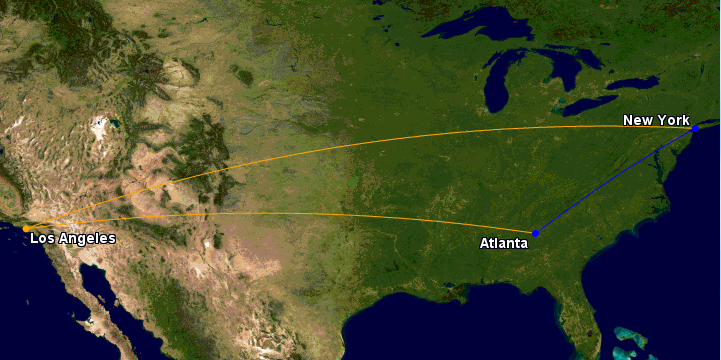
If you want to book an open-jaw using those three cities, you have to make the open-jaw between New York and Atlanta. JFK-LAX and LAX-ATL is a valid round-trip with an open-jaw, as is the reverse. LAX-ATL and ATL-JFK is not a valid open-jaw, since the unflown part (JFK-LAX) is longer than ATL-JFK.
If 3 cities make up the vertices of a triangle, the open-jaw is the shortest side of that triangle.
So far, so clear? Good.
The Prior Research:
Earlier this year, I booked my sister on a Delta award to join me in India and Vietnam. Her itinerary was Atlanta to Mumbai via Amsterdam on Delta in coach, and Hanoi to Atlanta via Paris and Washington DC on Vietnam Airlines, Air France, and Delta in business. The total price was 100,000 miles + $111 in taxes: 40,000 miles for Atlanta to Mumbai in coach, and 60,000 miles for Hanoi to Atlanta in business.
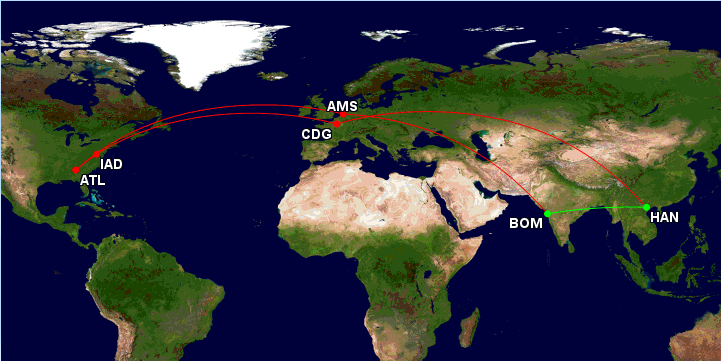
The only cities that matter in our example are the origin and the destinations. Let’s clean up the map:
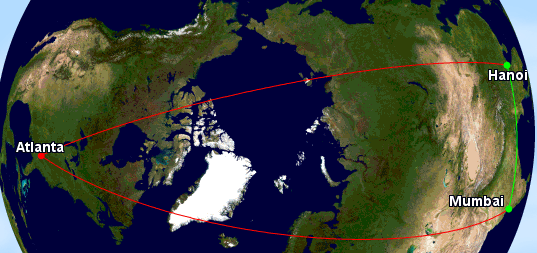
I took care of closing the Mumbai-Hanoi open-jaw with an award ticket on Singapore Airlines.
This booking taught me a few things about Delta SkyMiles:
1) You can open-jaw across two regions. The price for each half of the round-trip will match with the corresponding one-way price on the Delta award chart.
2) You can fly one class one-way and another class of service the other way, and pay the corresponding one-way mileage amount for each part of the trip.
Combining #1 and #2, I got Atlanta-Mumbai for 40,000 miles (the low-level coach price for a USA-India one-way) and Hanoi-Atlanta for 60,000 miles (the low-level business price for a Southeast Asia-USA one-way)
3) You can route Southeast Asia to USA via Europe (HAN-ATL was within MPM for an Atlantic crossing, and Vietnam Airlines/Air France publish a TATL route).

The Experiment:
Los Angeles to Sao Paulo is 6156 miles. Since that will be one of the two flown segments of the award, that means that my open jaw city must be less than 6156 miles away from Sao Paulo. I went to the Great Circle Mapper and plugged in ranges for 6155 miles away from both GRU and LAX.
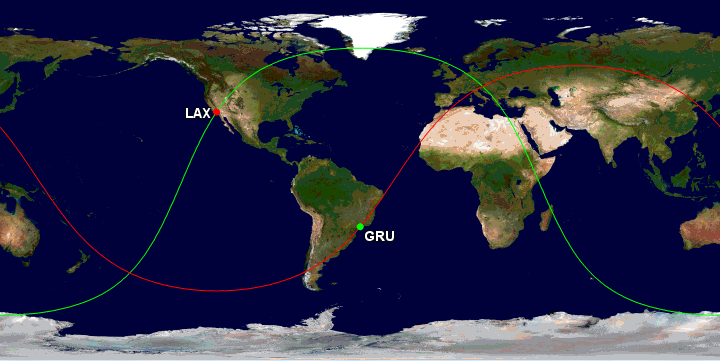
The red line signifies all parts of the world that are within 6155 miles away from LAX.
The main rule is to stay within the green line, since the open-jaw cannot exceed our LAX-GRU flown leg. This means that our open-jaw can extend as far out as most of Western Europe and much of Africa.
The red line is a little bit more difficult to explain, but I’ll try. It signifies 6155 miles away from LAX – if you exceed that, that means that LAX-GRU is the shorter of your two flown journeys on the round-trip, so all you have to do follow the stay within the green line rule. This means that much of Africa is in play for this open-jaw.
In this example, the explanation becomes tricky in western Europe (UK, Spain, France, etc.), where the distance between those cities and LAX is shorter than LAX-GRU. The best way to guess if a European city is valid for this open jaw is to see if a city is closer to the red line than it is to the green line. By eyeballing it, Barcelona would be a valid city for an open-jaw, while London would not. We can check by inputting those in to the mapper:
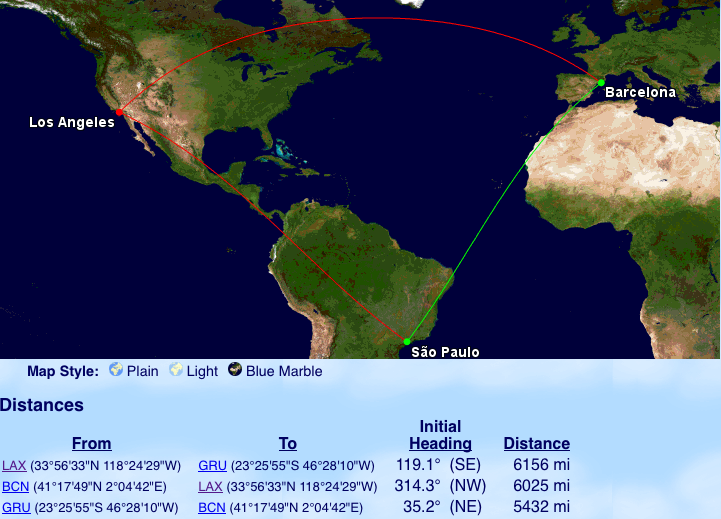
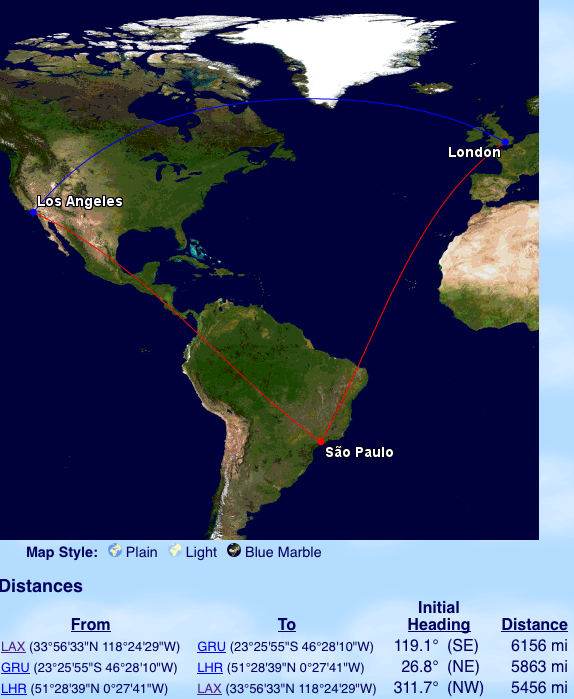
Let’s check if we can book a Delta open-jaw between Brazil and Spain. Both USA-Brazil and USA-Europe price at 50,000 SkyMiles for low-level business one-way. The total price we’re looking for is 50,000 + 50,000 = 100,000 miles.
I looked up the space from Los Angeles to Sao Paulo by searching for a one-way award on Delta’s site, keeping in mind which days the flight operates. I easily found space on Korean Air.
For Barcelona to Los Angeles, I first searched space from SkyTeam hubs like Paris-CDG and Amsterdam to Los Angeles with Delta’s one-way search, found the space, then searched for space from Barcelona to the European gateway.
Once I found the space I wanted, I entered the routing into the multi-city booking engine.
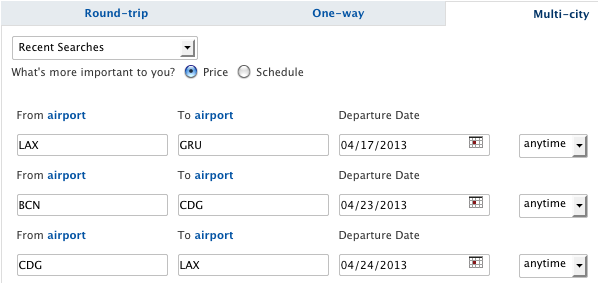
I went through and selected the flights I had found earlier at the low level … and it priced correctly at 100,000 miles!
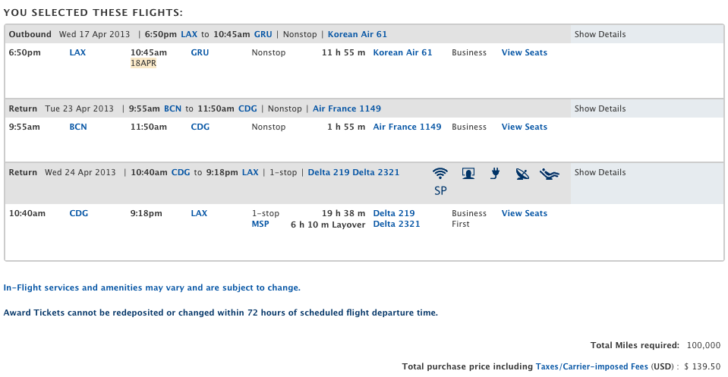
Connecting the Open-Jaw:
Now that I know that I can book an open-jaw between Sao Paulo and Barcelona, let’s look at connecting that open-jaw with another award.
Remember the fifth freedom post and using Google to search flight routes? If we search for “flights from Sao Paulo to Barcelona” you’ll see that GRU-BCN is flown by none other than Singapore Airlines with their 77W, which means that First and Business are available for redemptions with Krisflyer miles! While Singapore Airlines fuel surcharges aren’t as bad, no fuel surcharge is still better. This is a great opportunity to fly Singapore First! Keep in mind that you get a 15% discount on the miles when you book online.
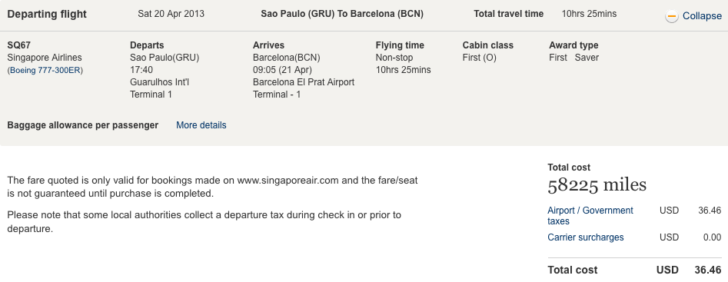
What about Avios? You can book GRU-London-BCN on British Airways in First, and it shouldn’t charge any fuel surcharges due to a Brazilian law. However, according to Million Mile Secrets, you have to first change your address to a Brazilian address. While some may worry about the ethics of doing such a change, understand that the law applies to itineraries, not residency, so BA’s foolish system shouldn’t be charging the fuel surcharges in the first place.
American Airline’s website shows the proper taxes without fuel surcharges.
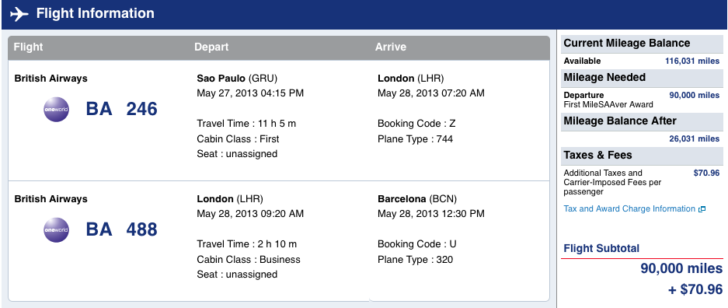

The Conclusion:
The example I used in here is just one possibility that you can try. All I’m trying to show is how even SkyMiles can be used for interesting itineraries, not just more flexible programs like American AAdvantage and United MileagePlus. The further out your destination, the larger your open-jaw can be. Other programs, like Avios, can be used to fill in the open-jaw.
I still agree that Delta miles are some of the tougher miles to use, for a variety of reasons. You can’t book international First class, which takes away flexibility when trying to find premium cabin award space. Their 3-tier award system and lack of decent Skyteam partners in some areas of the world can make it tough to find an award without paying an arm and a leg. I only earn Delta redeemable miles when I am also earning Delta Medallion Elite qualifying miles (like when I’m spending on my American Express Delta Platinum card, or flying their great domestic product). Otherwise I put my spending to better award currencies like Chase Ultimate Rewards and Starwood Preferred Guest.


